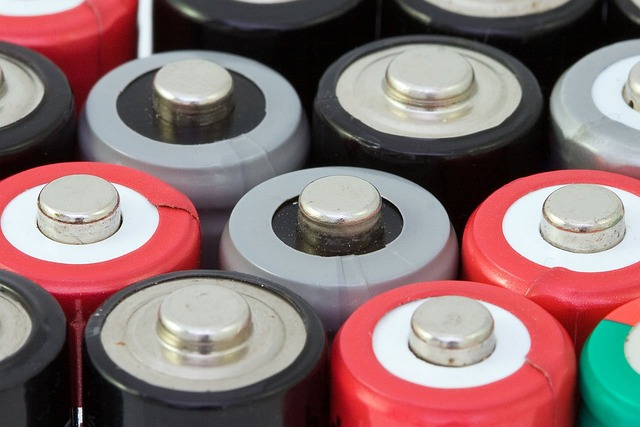Battery manufacturing is on a roll. It’s set to expand exponentially by 2030. A recent report by McKinsey & Company, in fact, projects the Global demand for lithium-ion batteries to climb over the next decade—with the number of GWh needed jumping from about 700 Gigawatt-hours (GWh) in 2022 to around 4.7 Terawatt hours (TWh) by 2030. Driving this growth is the demand for lithium-ion batteries (LIBs), which are quickly becoming one of today’s leading energy storage solutions.
Industrial ovens play a crucial role in battery manufacturing by providing a controlled environment for drying, curing, and sintering battery components. Industrial ovens also remove solvents, moisture, and other volatile components from battery materials and promote chemical reactions essential for superior battery performance. These operations help manufacturers boost the energy density, efficiency, and longevity of today’s batteries. The contribution of industrial ovens to generating high-quality batteries, however, often goes unrecognized by manufacturers.
Below we take a closer look at how industrial ovens help manufacturers produce batteries that feature optimize performance and the steps in battery manufacturing:
Battery Manufacturing: The Steps
Manufacturing a battery is complicated and challenging. It starts with reviewing
the battery’s raw materials, shifts to creating the cell’s chemistry and structure, and ends with a finished product. Each step in the process is critical to creating a high-quality battery that provides optimal performance. While some manufacturers use a proprietary process to produce a finished product, many follow the basic steps listed below:
- Raw material selection
- Acquire raw materials
- Produce components for battery
- Add structural electronic components
- Connect terminals to create a battery pack
- Coat each cell with a separator
- Test cells after basic assembly
- Apply quality assurance steps
- Process full documentation logs
- Ship batteries to customers
Testing ensures the battery meets critical standards from regulatory organizations like ISO and UL. Testing may involve conducting performance evaluations at temperature extremes, diagnosing leakage problems, and doing capacity readings through voltage measurement implementations from devices connected directly to the battery’s data-logging ports. Quality assurance occurs using specimens across different LIB production batches and is checked randomly during production runs and the process.
The Role of Industrial Ovens in Manufacturing Batteries
Understanding how production mechanics impact battery manufacturing is vital. That’s because each step in the production process is crucial to optimizing battery performance. The critical role of industrial ovens in boosting quality and performance is more critical than many manufacturers think. Here are some specific examples of the role industrial ovens play in battery manufacturing:
- Drying Electrodes: Industrial ovens help dry the electrodes of graphite or lithium cobalt oxide batteries. The ovens can remove moisture and other volatile components from the electrodes, ensuring their stability and performance.
- Curing and Sintering: Industrial ovens cure or sinter the electrodes and other battery components. Curing heats the components at a specific temperature and time to promote cross-linking or polymerization of the materials. Sintering is the process of heating the components to a temperature below their melting point, causing the particles to fuse.
- Annealing: Annealing is a process used to improve the crystal structure and properties of certain battery materials. Industrial ovens heat the materials to a specific temperature and then cool them down slowly, forming a more uniform crystal structure.
- Preheating: Industrial ovens are used for preheating the components of the battery before assembly. Preheating ensures that the components are at the correct temperature and eliminates any moisture that may be present, which can affect the battery’s performance and safety.
- Aging: The aging process involves subjecting the batteries to accelerated aging conditions to simulate the battery’s performance and reliability over time. The aging process may involve subjecting the batteries to elevated temperatures or high currents to accelerate the aging process. The batteries are typically cycled during the aging process, and the capacity is measured periodically to evaluate their performance over time.
- Testing: Temperature cycling tests are performed to evaluate the battery’s performance and reliability under different temperature conditions. The battery is typically subjected to a series of temperature cycles, which involves ramping the temperature up and down between different temperature ranges.
Industrial ovens are also used to preheat the components of a battery before assembly and subject batteries to accelerated aging conditions by simulating the battery’s performance and reliability over time. Plus, they help evaluate the battery’s performance and reliability under different temperature conditions.
Industrial Ovens Help Power Battery Performance
Industrial ovens will play a significant role in powering up battery production. They help drive battery performance by providing the controlled environment necessary for today’s manufacturers’ preparation and processing of battery components. They also ensure modern battery safety, quality, and longevity. Working closely with an experienced industrial oven manufacturer like Despatch can help you choose the right industrial oven for your battery processing application and boost your competitiveness.
Optimizing battery performance makes sense. The next decade will see a significant jump in battery production driven mainly by the demand for more passenger electronic vehicles. One research company, in fact, sees the “entire lithium-ion (Li-ion) battery chain—from mining through recycling—growing by more than 30 percent annually from 2022 to 2030, when it will reach a value of more than $400 billion and a market size of 4.7 TWh.” Passenger electric vehicles will contribute significantly to the surge in demand. Manufacturers that meet this demand will boost competitiveness and profitability.
Image by PublicDomainPictures from Pixabay






